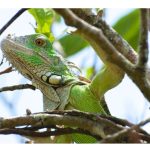When we think about hunting, we don’t really have visions of the South Florida apartment and condo communities in mind. But that’s exactly where we’ll be heading as we talk about what it’s like to hunt iguanas down in the Miami and Fort Lauderdale area.
Why Iguanas?
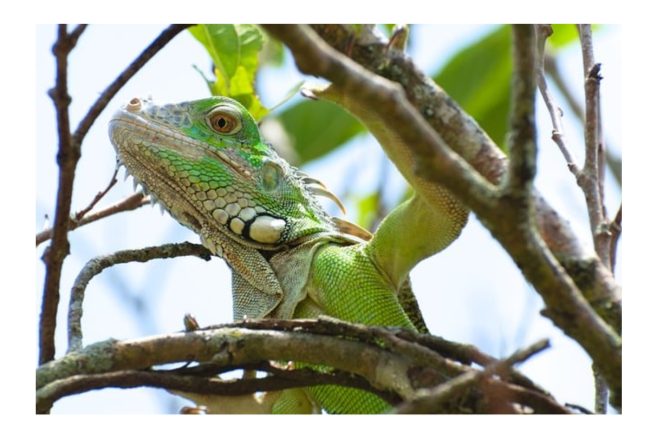
Before we get to the how, we should discuss the why. Iguanas have all but taken over places like Puerto Rico and other Caribbean locations. The typical female iguana may lay up to 90 eggs per year, and with no natural predators, most of their young survive. This rapid, exponential increase has caused devastating effects on the local ecosystems. While they are quite beautiful animals, the damage they cause is not so beautiful.
The iguana invasion was met with little to no resistance at first as they moved north into South Florida. But as their effects began to be felt, residents and municipalities realized that something had to be done to address the damage.
The biggest loss comes from the destruction of infrastructure. Iguanas burrow elaborate tunnel systems into canal banks, under highways, and the thousands of picturesque ponds encircled by townhouses, condos, and apartments. When these tunnels collapse, roads are destroyed, and bank erosion goes unchecked. Communities are looking at damages costing millions of dollars annually. Finding a solution has not been easy.
Rise of an Interesting New Industry
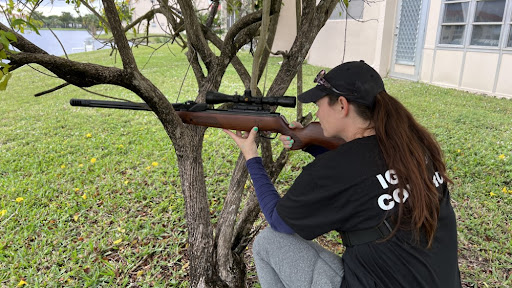
Animal control and pest abatement have always been around. But these new “pests” have required new techniques. Traps simply don’t work, and it’s increasingly unacceptable to use poisons as an option. That really only leaves hunting them. Businesses like Iguana Lifestyles, which focus on removing all manner of invasive species, have arisen to meet the challenge. Harold, the owner of Iguana Lifestyles, was our guide for our recent hunting trip. He works with HOAs, municipalities, property managers, and individual homeowners directly to address the situation.
Given that most of the pest abatement is being done very close to active housing environments, safety is critical. Florida law clearly states that the shooter is 100% responsible for any injury or property damage. That means that you own your pellet until it comes to rest. If anything goes sideways with your shot, you are individually responsible.
Tools of the Trade
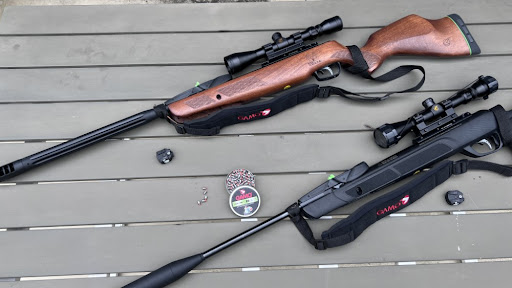
Airguns are increasingly becoming the instrument of choice for iguana control. Iguanas, even large ones, can be taken out with very little energy. It’s all about accuracy and shot placement, and airguns really shine here.
Since iguanas are cold-blooded, they can take a tremendous amount of damage to the body and just keep going. You need to make that perfect headshot to achieve a clean, ethical kill. The typical “ideal” kill zone on an iguana is about the size of an aspirin, and the perfect shot is right behind the “ear” into the brain. This shuts them down instantly. Anything else, and they will just keep on moving.
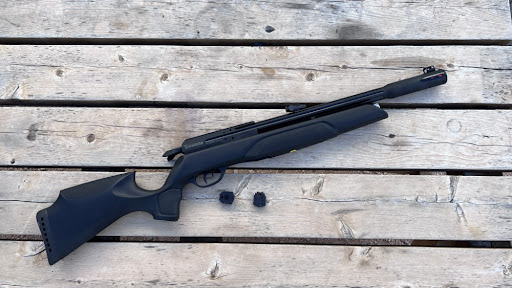
For our hunt, we used a variety of Gamo airguns. We shot the Gamo Arrow, the Gamo Bone Collector Swarm Gen 3I, and the Gamo Swarm Magnum Gen 3i. The Swarm airguns are multi-shot break barrels that use Gamo’s new inertia-driven mag system. It’s a very cool and reliable way to automatically reload your break barrel as you cock the gun without accidentally double feeding. The Bone collector produces around 22 +/- foot pounds, whereas the Gamo Swarm Magnum can produce up to 30 +/- foot pounds. Both are very accurate in the hand of an experienced shooter. The Gamo Arrow is an entry-level PCP airgun that has a great shot count and produces about 14 foot pounds.
The Hunt
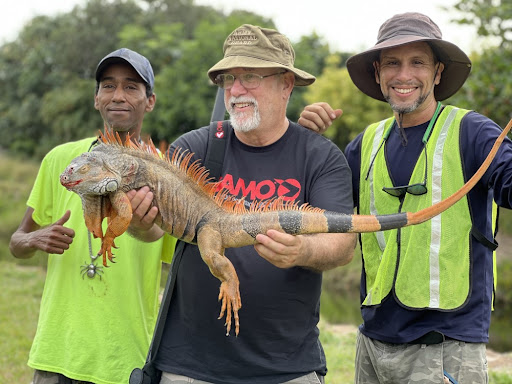
We hunted for two days, and unfortunately, the weather was not ideal. We did get into a couple of good spots, and when the sun came out, things started to come together. Before we even started our hunt, Harold called the local police department to let them know that we’d be in the area. This is really important because residents may not understand why there are strangers with “guns” walking the property or on the bank of a canal beside a main road. Calling things in ahead of time is really important.
Our best location was a canal that ran behind some houses. The highway was on the other side of the canal, so we had to be very careful of our shot angles. One person would look for the iguanas in the trees and then call over a shooter to take a shot. The typical shot distance was within 15 yards, with most shots much closer. This isn’t always the case, especially when you are hunting them in subdivisions. Those shots tend to be 20 to 40 yards on average.
While some may think that iguanas are not very smart, you’d be surprised how quickly they know they are in danger and jump into the canal. Once we got the hang of stalking and staging up for the shot, we started to make a dent. In the space of about an hour, we came away with a good dozen or more kills from that one location. Warmer, sunnier weather would have yielded three to four times as many kills, but you play the hand you’re dealt. In the end, it was still very fun and far more challenging than simply shooting them sunning themselves by a pond.
The Ideal Iguana Airgun
So, many have asked what is the ideal iguana airgun? This will vary a lot for each shooter, but in short, you want something lightweight, easy to carry, easy to shoot offhand, and that has repeatable accuracy. We’ve spoken to Harold about the various folks that come out to hunt with him. Many bring elaborate PCP airguns only to find that while they may be ideal on the bench, they are unwieldy offhand shooting at only 10 to 15 yards. The general opinion, after talking with Harold and from our own experiences, is that an accurate, medium-powered break barrel is ideal. You don’t need to hunt for high-pressure air, and you don’t need a lot of power. Less is certainly more in this case. See all our small game hunting airguns.
If you have an iguana problem or other pests that you may want to eliminate and have questions about what airguns may do the job, please give us a call. We’ll be happy to listen to your needs and help you pull together a package that’s sure to get the job done. Check out our Airgun Hunting Guide for more hunting ideas.
